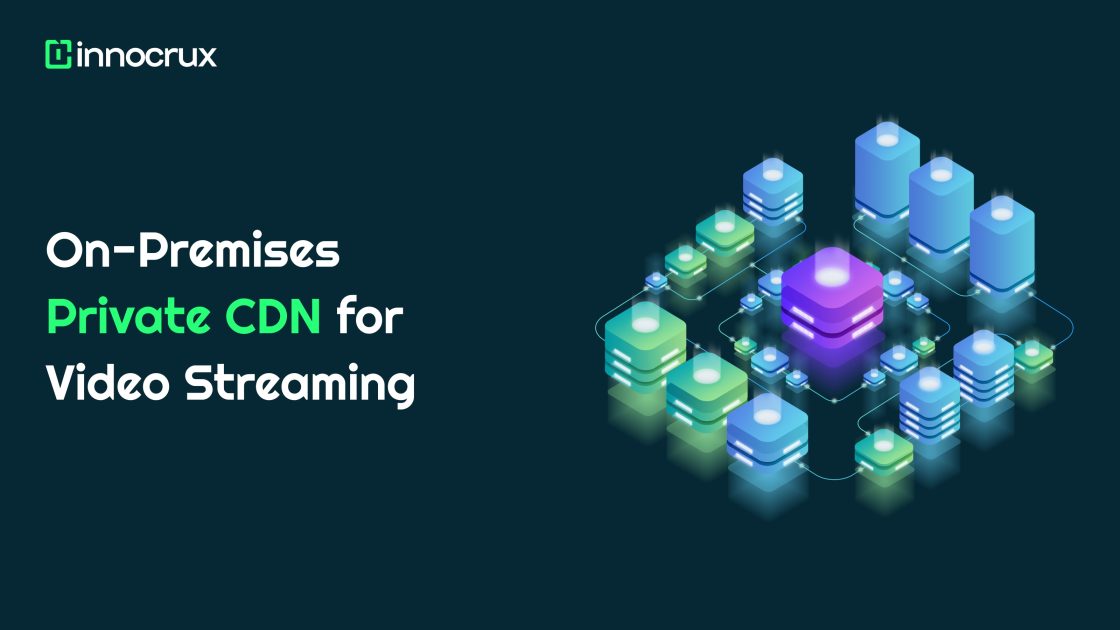Introduction
The explosion of Over-The-Top (OTT) platforms has revolutionized how audiences consume video content. To meet the demands of modern viewers, OTT services must offer scalability, reliability, and seamless performance. By drawing inspiration from Netflix’s microservices-driven architecture, this guide delves into building scalable OTT microservices powered by CDNs (Content Delivery Networks) for optimal performance. Whether you’re looking for an OTT solution, an OTT streaming solution, or guidance on how to build an OTT platform, this content has you covered.

Understanding Netflix’s Architecture
Netflix is a great example of how to build a successful streaming platform, with a focus on scalability and reliability. Here’s how its system works:
- Microservices-Driven Architecture: Netflix is made up of many small services, each handling one task, like content recommendations or billing. This allows Netflix to grow easily and change features without affecting the whole platform. For example, if Netflix wants to improve its recommendations, it can do so without interrupting the video streaming service.
- Distributed Systems: Netflix uses many servers in different locations to make sure the platform is always available, even when there’s a lot of traffic. This helps the platform stay online without problems, even during big events. For OTT services, this approach is essential to keep users happy no matter where they are in the world.
- Load Balancing and Fault Tolerance: Netflix uses special tools to make sure traffic is evenly spread across multiple servers, which helps avoid crashes. If one server fails, another takes over, so the service keeps running smoothly. For live streaming and video on demand (VOD) services, this is critical to avoid disruptions, especially during high-traffic moments.
- AI-Driven Personalization: Netflix uses smart algorithms to track how viewers watch content and suggest shows or movies based on their preferences. This makes users feel more connected to the platform, increasing their engagement. This can also be applied to any OTT platform, like live streaming apps, to keep viewers engaged.
- Continuous Deployment: Netflix quickly rolls out new features and fixes using DevOps and automated systems. This allows them to update the platform without interrupting the user experience. This is important for OTT platforms as they need to keep improving and evolving to stay competitive.
Role of CDNs in OTT Platforms
Content Delivery Networks (CDNs) are essential for ensuring that streaming content is delivered quickly and reliably around the world, which is important for keeping users happy on OTT platforms.
- What is a CDN? A CDN is a network of servers spread out in different locations. It stores video content closer to users, so they can watch it faster without delays. This is especially important for OTT platforms like live streaming services or video-on-demand apps where delays can ruin the experience.
- Benefits of CDNs for Video Streaming:
- Faster Load Times: CDNs reduce the time it takes for videos to load by storing them closer to users. This means less buffering and smoother playback, even for people in remote areas.
- Reduced Server Load: CDNs spread the workload across multiple servers, so no single server gets overloaded. This is especially important for platforms that have millions of users.
- Improved User Experience: With better video quality and less buffering, users stay satisfied and engaged. This is crucial for retaining users, whether it’s a live broadcast or a VOD platform.
- Scalability: CDNs help OTT platforms handle millions of users without slowing down. So, when there’s a surge in traffic, such as during a live event, the platform can still perform well.
- Reliability During High-Traffic Periods: CDNs are designed to handle spikes in traffic, ensuring that even during major events, the platform stays up and running.
Designing Scalable OTT Microservices
For OTT platforms to work well, they need to handle a lot of users and provide great streaming experiences. Here’s how to design a system that can grow easily:
- Modular Design: By breaking down the platform into smaller parts (like video encoding, user management, and analytics), each can grow independently based on need. This helps the platform handle big increases in traffic without affecting other parts of the system.
- Horizontal Scaling: Using cloud services like AWS or Google Cloud, the platform can add more servers whenever needed. This ensures the platform can handle more users without slowing down.
- Key Components: A good OTT platform has essential components like API gateways to manage user requests, video processing tools to convert content for different devices, and databases to store user and video data.
- Cache Layers: Tools like Redis or Memcached store frequently used data (like popular videos) closer to users, speeding up access and reducing strain on the system.
- Content Security: Protecting content from piracy is vital, and OTT platforms use encryption and access controls to keep videos secure. This is especially important for platforms offering premium content that needs to be kept safe.
Key Components of the Architecture
Building a scalable OTT solution requires a robust set of infrastructure components to ensure high performance and seamless user experiences:
- API Gateway: The API gateway acts as the main entry point for all client requests, managing tasks like load balancing, authentication, and routing. For any OTT platform provider, this ensures that requests are efficiently handled, directing users to the appropriate services without overloading individual components.
- Video Processing and Transcoding Pipelines: These systems convert raw video files into multiple resolutions and formats for different devices. This is key for video on demand (VOD) solutions to ensure smooth playback across various devices and optimize storage space. For an OTT streaming solution, the transcoding pipeline ensures that content is accessible to all users, regardless of device compatibility.
- Database Strategies: Effective OTT video solutions require a combination of SQL databases for structured transactional data and NoSQL databases for unstructured content like videos. By implementing strategies such as sharding and replication, these solutions scale effortlessly to accommodate millions of users across various regions.
- Cache Layers: By utilizing in-memory caching systems like Redis or Memcached, platforms can reduce latency and improve user experience by caching frequently accessed data such as video metadata and popular content. This is especially important for video streaming solutions, where latency must be minimized to ensure smooth, real-time streaming.
- Content Security: Content protection is critical in the OTT industry. Secure your platform with AES encryption, DRM (Digital Rights Management), and geo-restrictions to prevent unauthorized access. Integrating multi-factor authentication for platform users adds another layer of protection. Whether you’re developing a white-label OTT solution or a custom OTT solution development, securing your content ensures that your users’ data is protected, and intellectual property remains secure.
Challenges in Building Scalable OTT Microservices
Developing an OTT platform that scales efficiently comes with unique challenges, especially when trying to handle millions of concurrent users and diverse content types:
- Handling Millions of Concurrent Users: Live events can create a huge spike in traffic, and without efficient resource allocation, services can become overwhelmed. This challenge is common for live streaming solutions and OTT TV solutions, which need to handle peaks in demand seamlessly.
- Ensuring Low Latency and High Availability: To ensure minimal lag during video streaming, OTT platforms must incorporate CDN (Content Delivery Network) integration and geographical distribution of services. This minimizes delays and maximizes uptime, making sure that content is delivered quickly, even during high-traffic events.
- Managing Data Consistency and Security: As OTT solution providers scale, they must implement robust security measures such as distributed databases and strong encryption methods. This is essential in safeguarding both user data and content. For example, white-label OTT platforms often integrate features that allow for secure and flexible video delivery.
- Ensuring Cross-Platform Compatibility: In today’s market, OTT platforms need to provide consistent experiences across a wide range of devices, including web, mobile, and smart TVs. Continuous testing and optimization are necessary to keep the experience smooth across all these platforms. This is key when trying to build an OTT platform that works effectively on both small and large screens.
- Monitoring and Maintenance: As OTT platforms scale, they face more complexity in tracking system performance and resolving issues like system bottlenecks. This is where AI-driven analytics comes into play, helping to predict traffic spikes and optimize resource allocation for platforms like VOD solutions or live streaming platforms.
Best Practices for Implementation
To ensure the scalability and reliability of your OTT platform, follow these best practices:
- Containerization: Tools like Docker and Kubernetes allow for better packaging and orchestration of microservices, helping you scale more easily as the demand for live streaming apps or VOD platforms increases.
- Monitoring and Logging: Use observability tools like Prometheus and the ELK stack to track platform performance. This helps with debugging and performance tuning, ensuring a smooth user experience across all devices.
- DevOps Adoption: Implement CI/CD (Continuous Integration/Continuous Deployment) pipelines to speed up deployment and improve iteration. This is essential for maintaining an up-to-date OTT platform, whether it’s a custom OTT solution development or a white-label OTT solution.
- Adopt a Cloud-First Approach: Leverage cloud services like AWS, Azure, or Google Cloud to quickly scale and maintain high availability. This cloud infrastructure is the backbone for expanding a best OTT solution globally without worrying about physical hardware limitations.
- Content Localization: With global reach, supporting multiple languages, subtitles, and regional content preferences is essential. This expands your platform’s audience, making it more attractive to users worldwide. Whether you’re building a VOD platform or a live video streaming web application, localization ensures your platform meets local needs while maximizing global engagement.
By integrating these practices, OTT solution providers can build powerful, scalable platforms that thrive in today’s competitive OTT streaming market. Whether you are building an OTT app, a live streaming app, or a video on demand platform provider, these strategies will help your platform scale efficiently and securely.
Conclusion
Building scalable video streaming OTT solutions requires a blend of modular architecture, CDN integration, and cloud scalability to deliver high-quality content across devices. Whether you’re looking to build a live streaming app, a Video on Demand (VOD) platform, or an end-to-end OTT solution, embracing best practices and continuously innovating is key to staying competitive. By working with reliable OTT solution providers, leveraging content delivery networks (CDNs), and ensuring flexibility with adaptive streaming, businesses can provide seamless user experiences. Custom OTT solution development, cross-platform compatibility, and multiple monetization strategies like subscriptions, pay-per-view, and ads ensure that your platform meets a wide range of customer needs while maximizing revenue.
To thrive in the ever-evolving OTT market, focusing on data security, real-time analytics, and personalized content is crucial. Companies must prioritize multi-device accessibility, scalability, and offering localized solutions to expand their global reach. Whether building a live video streaming web application, a VOD platform, or a white-label OTT solution, integrating emerging technologies like AI for personalized recommendations and providing a seamless user interface is essential for long-term success. By collaborating with content creators and third-party service providers, businesses can continuously improve their content offerings and build a resilient, future-proof OTT video solution that resonates with audiences worldwide.








No comments yet